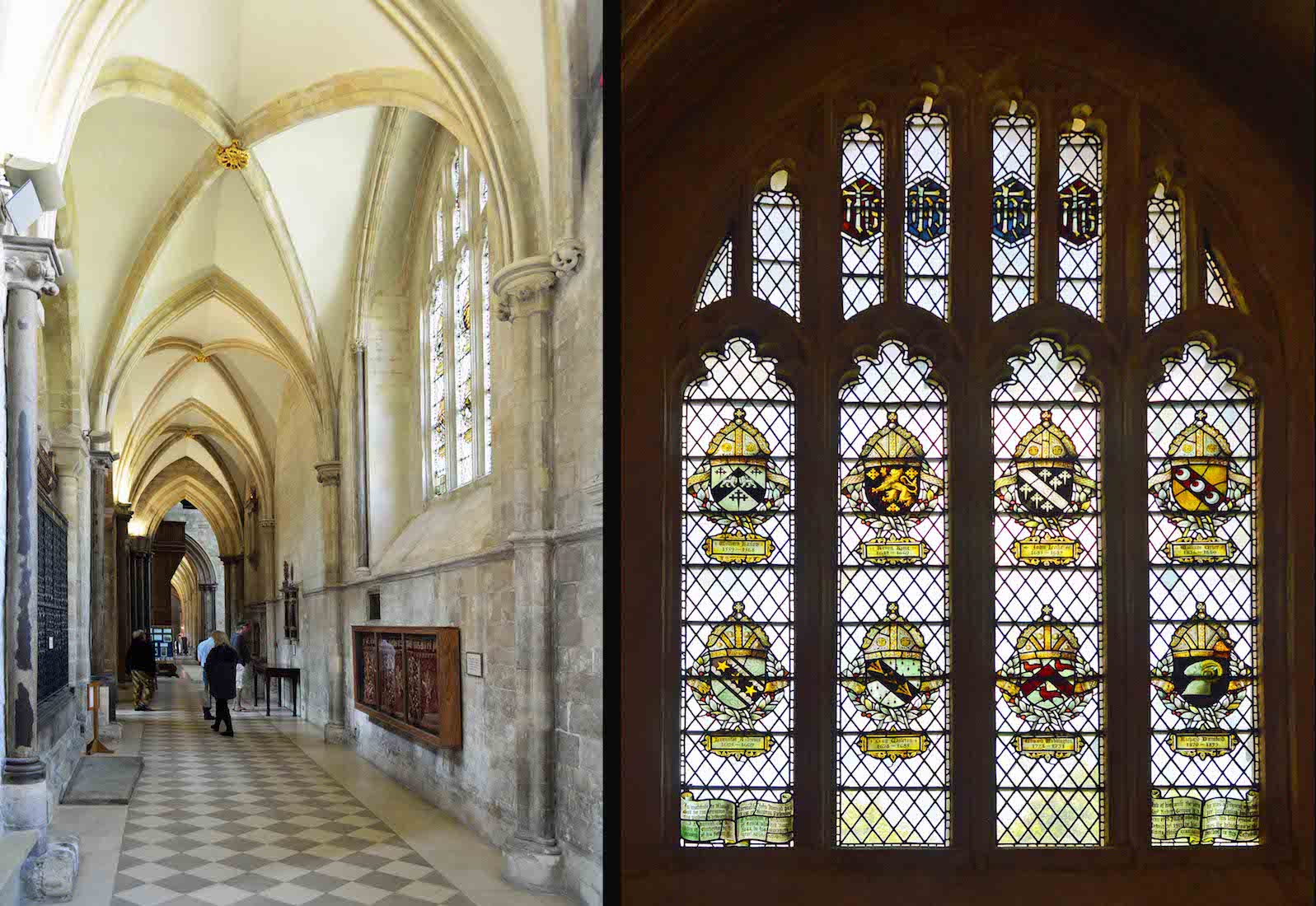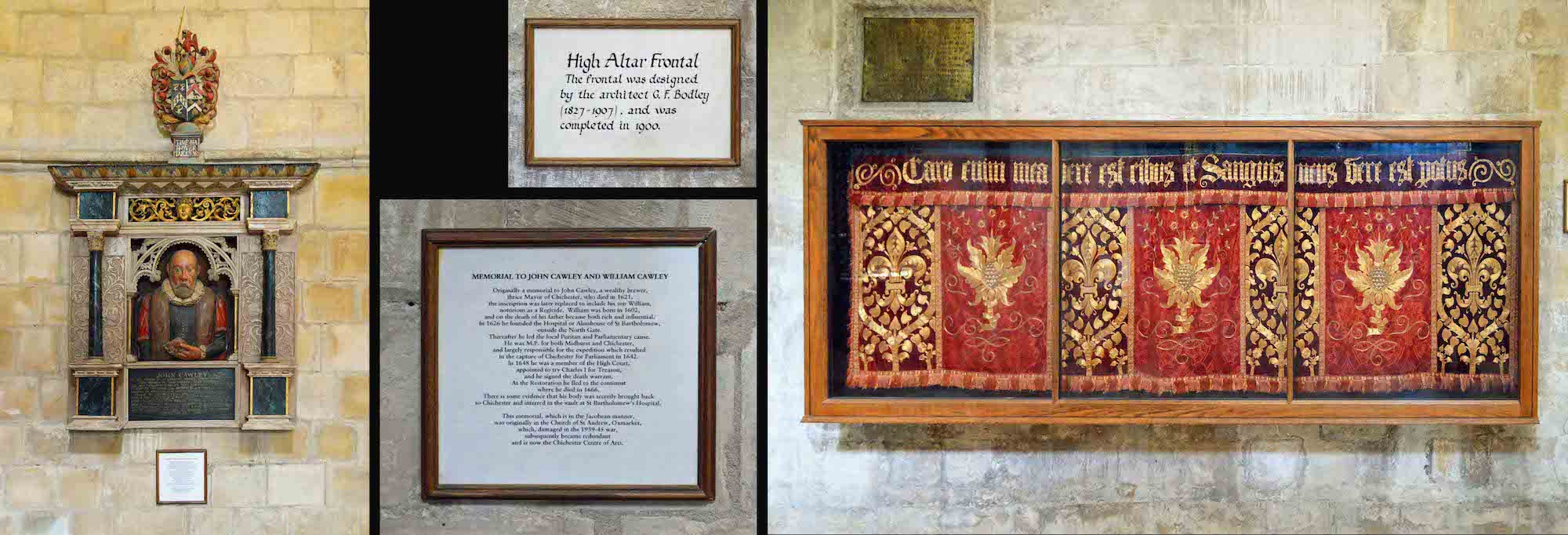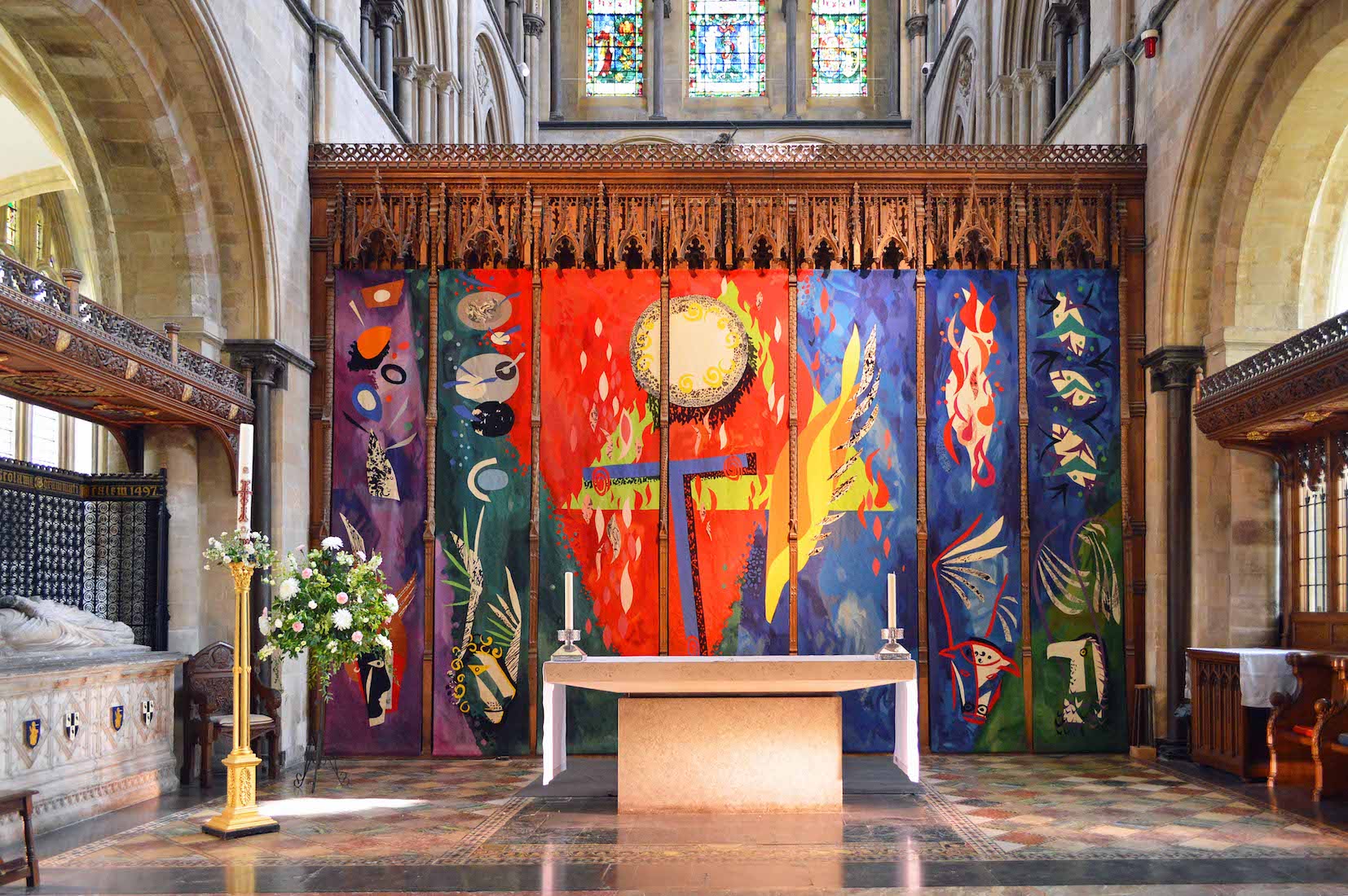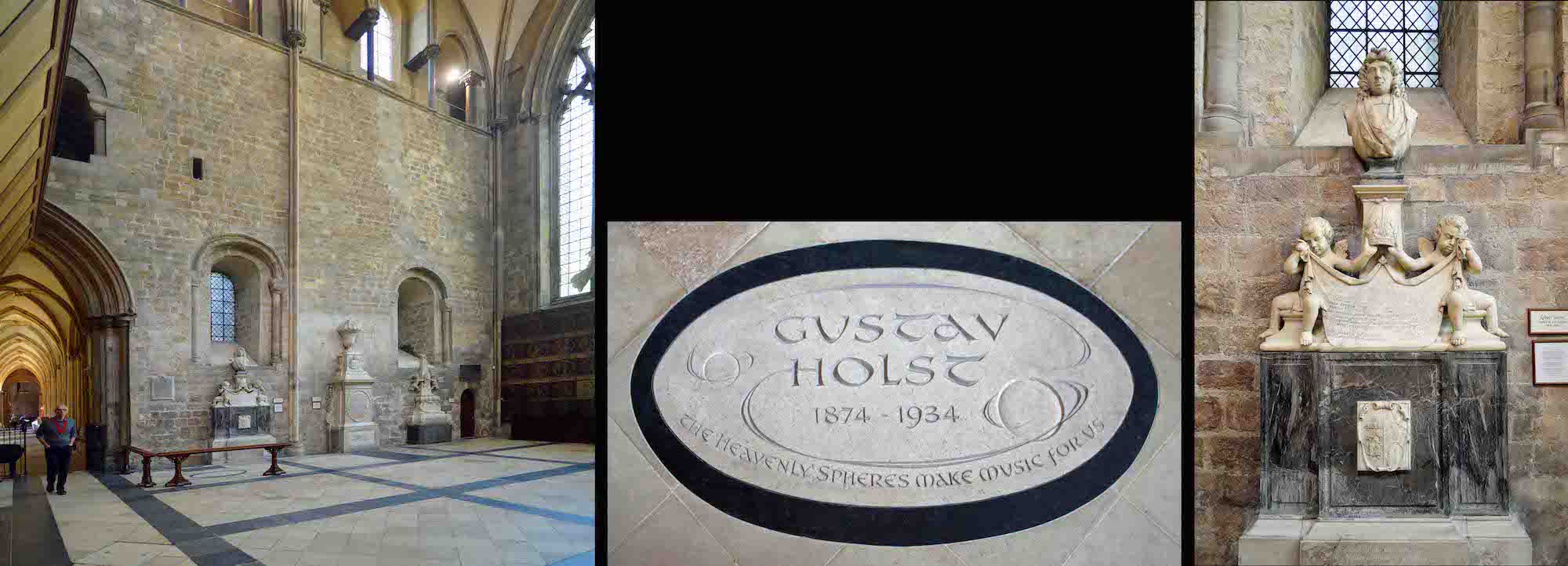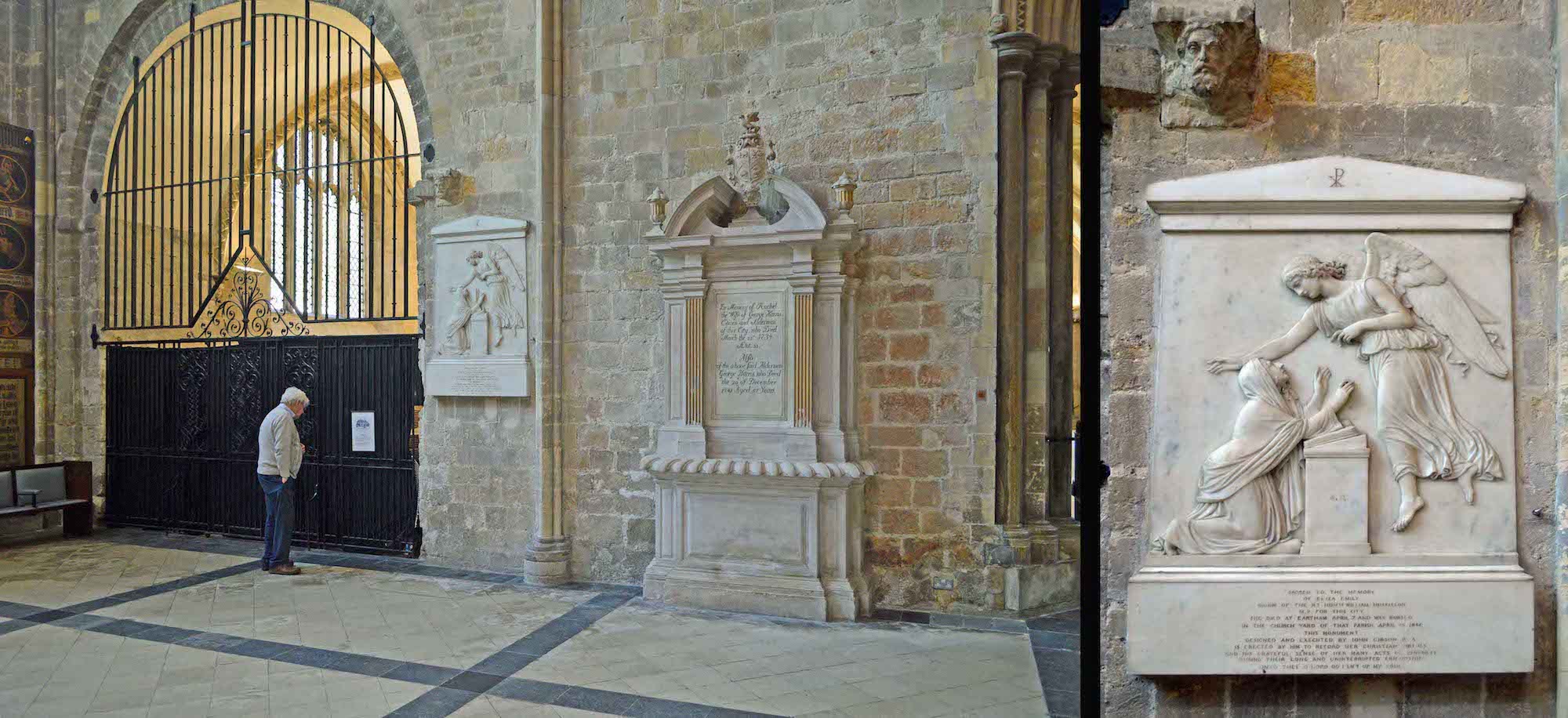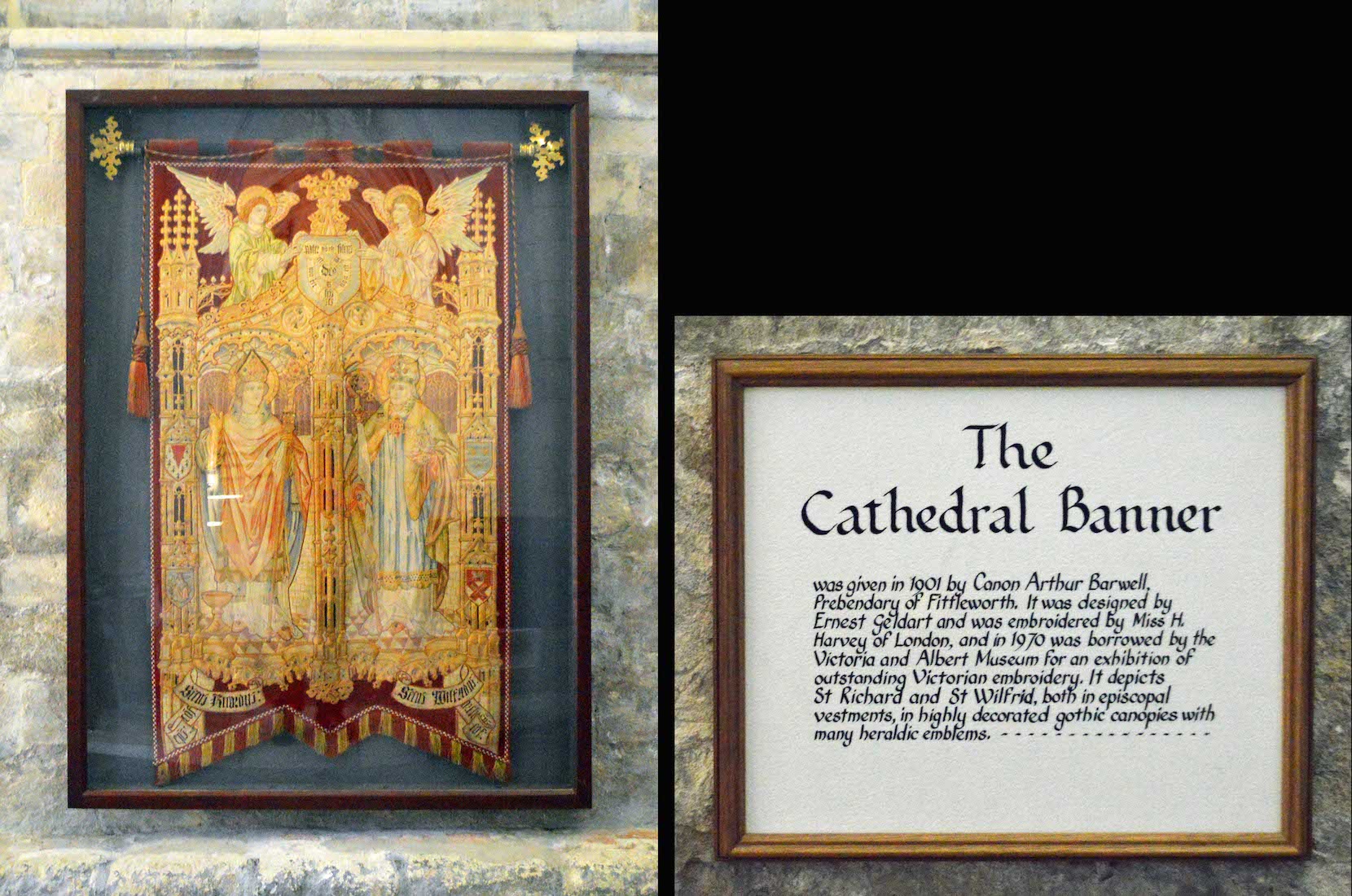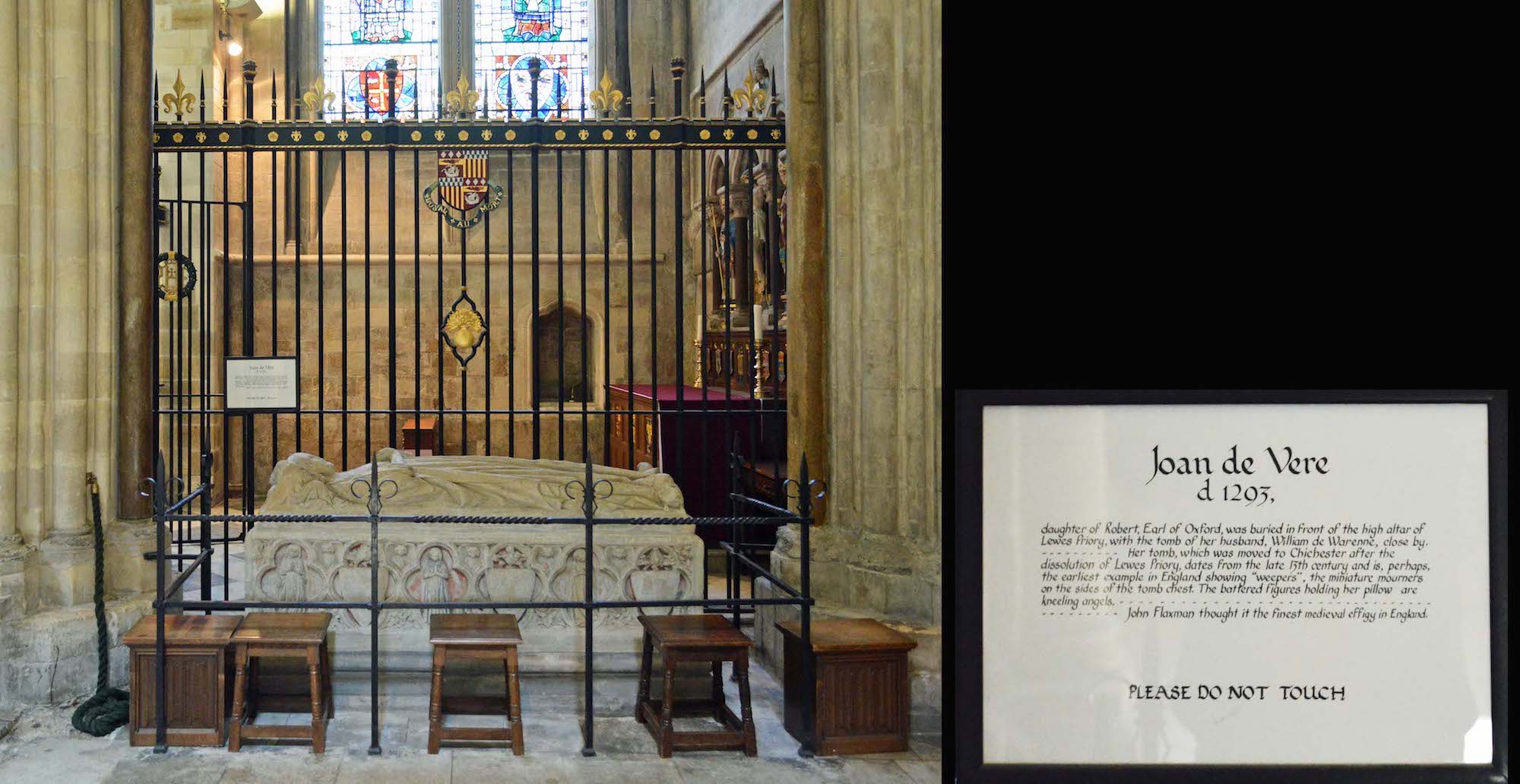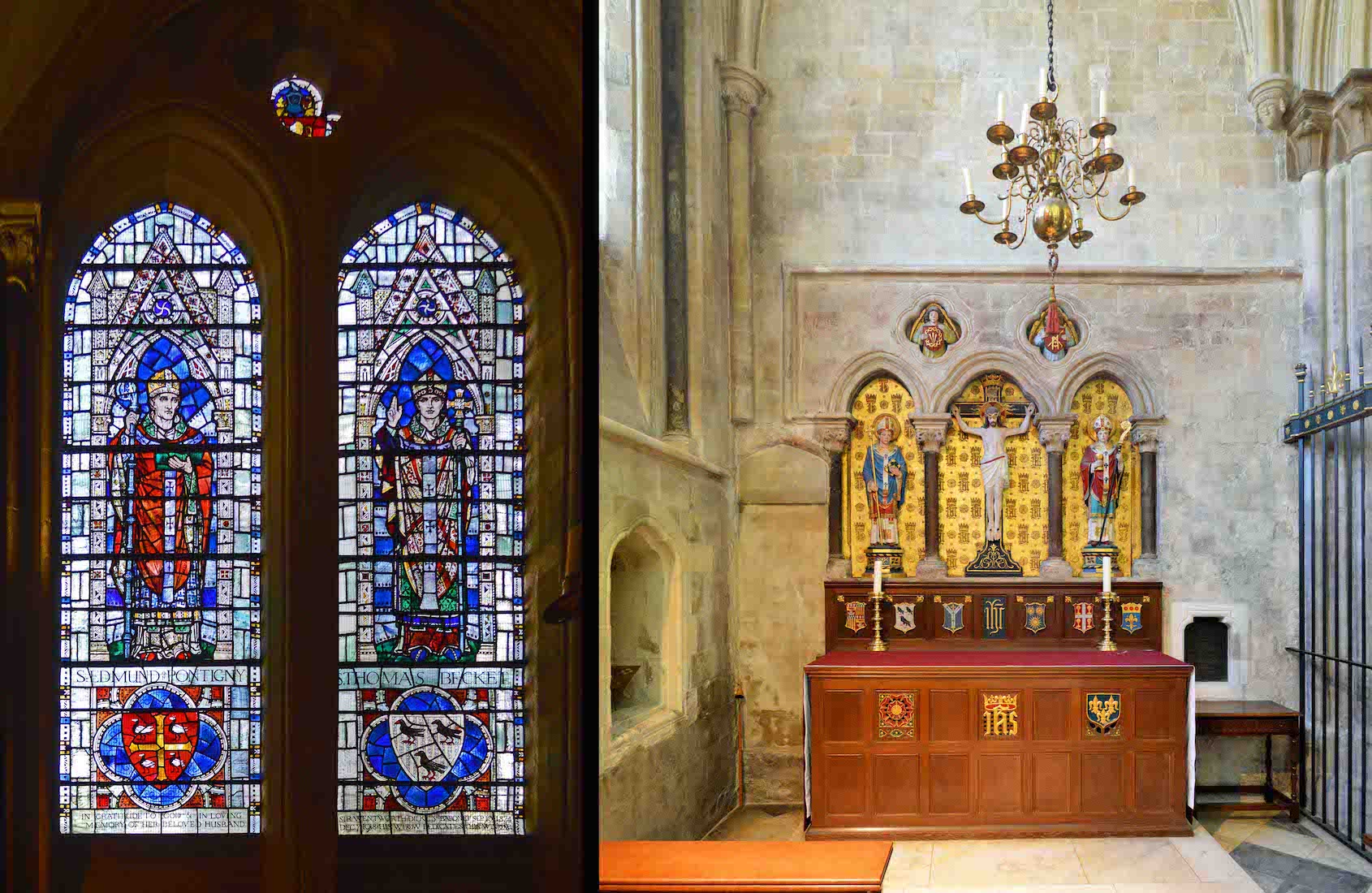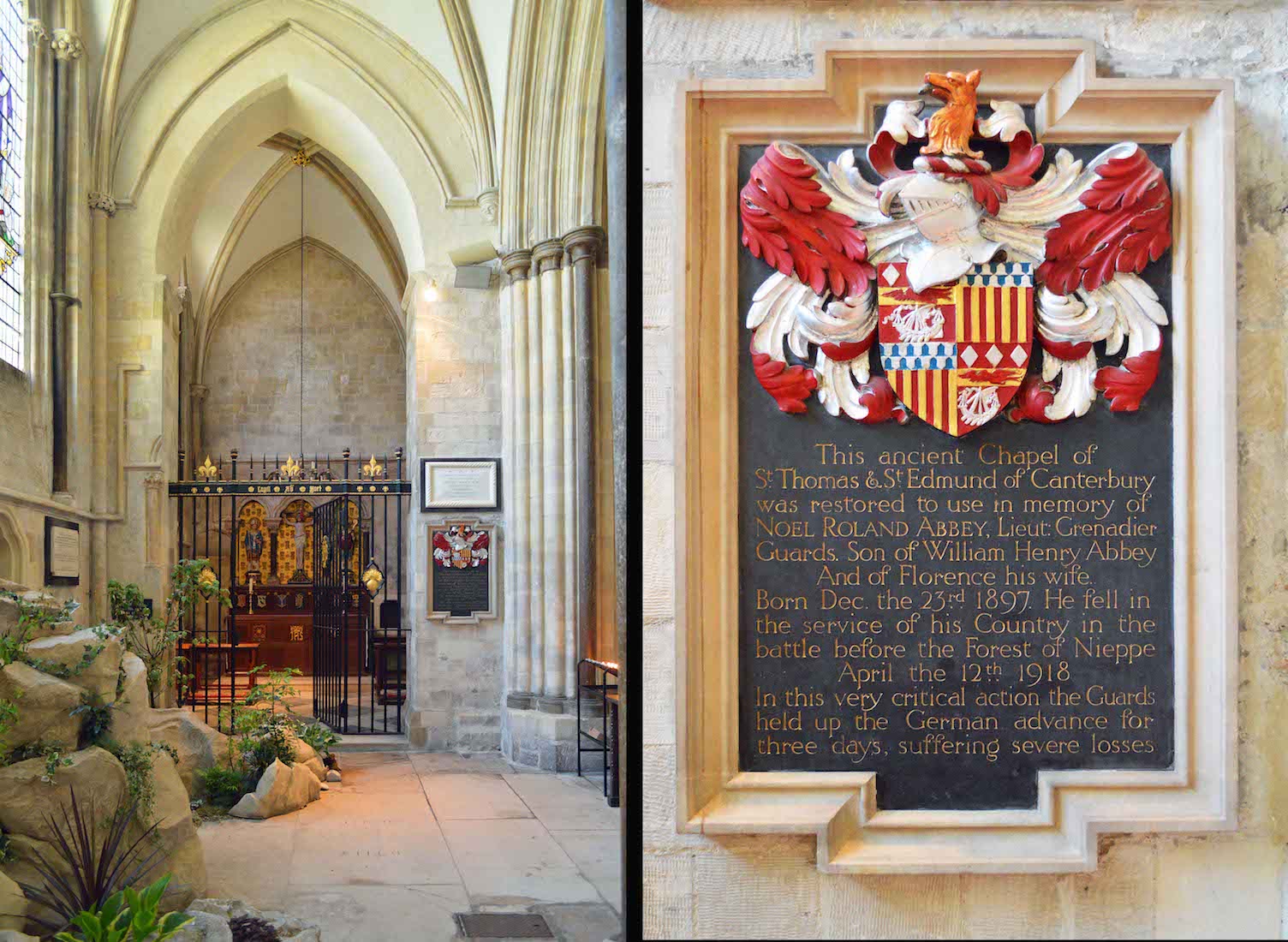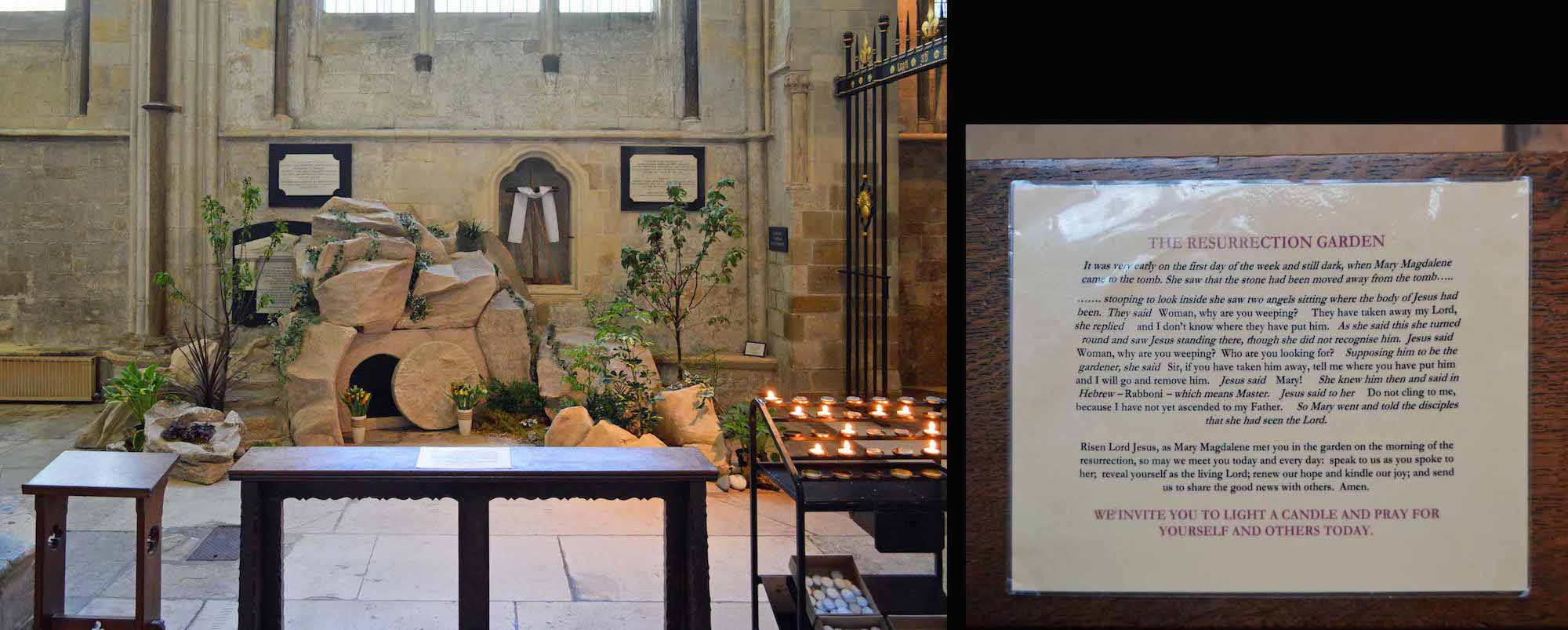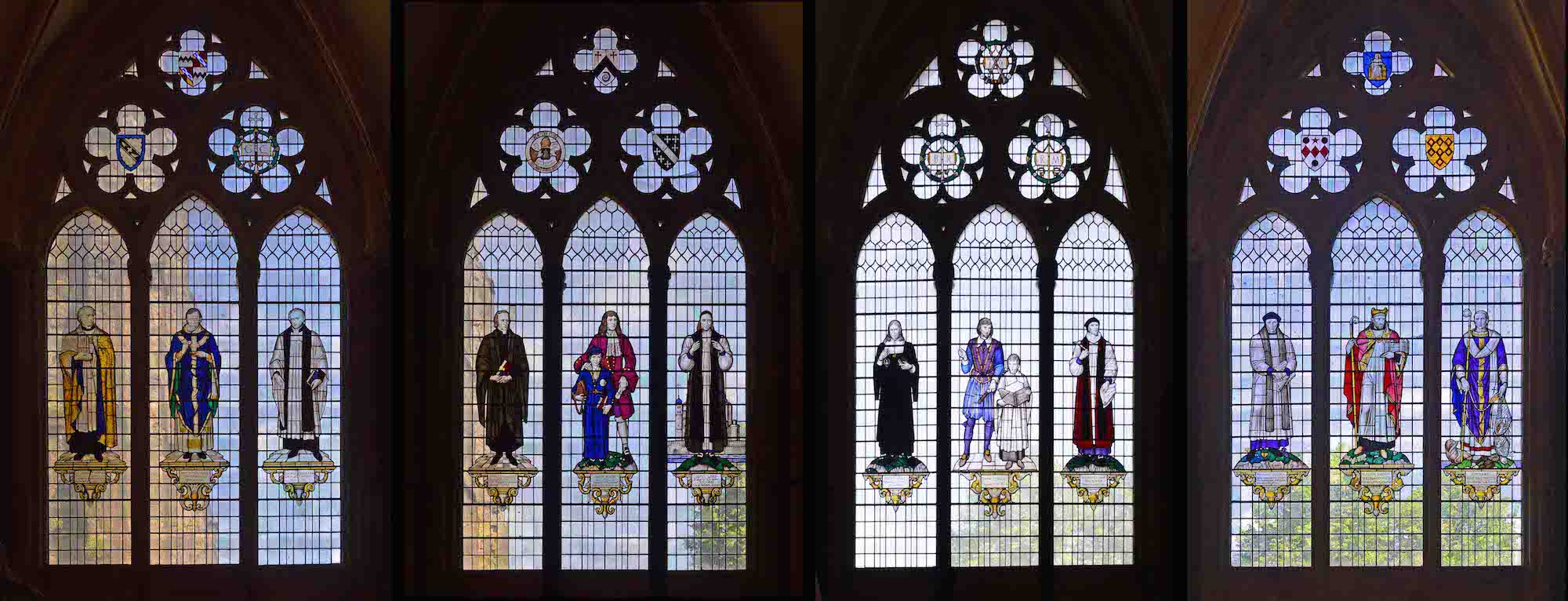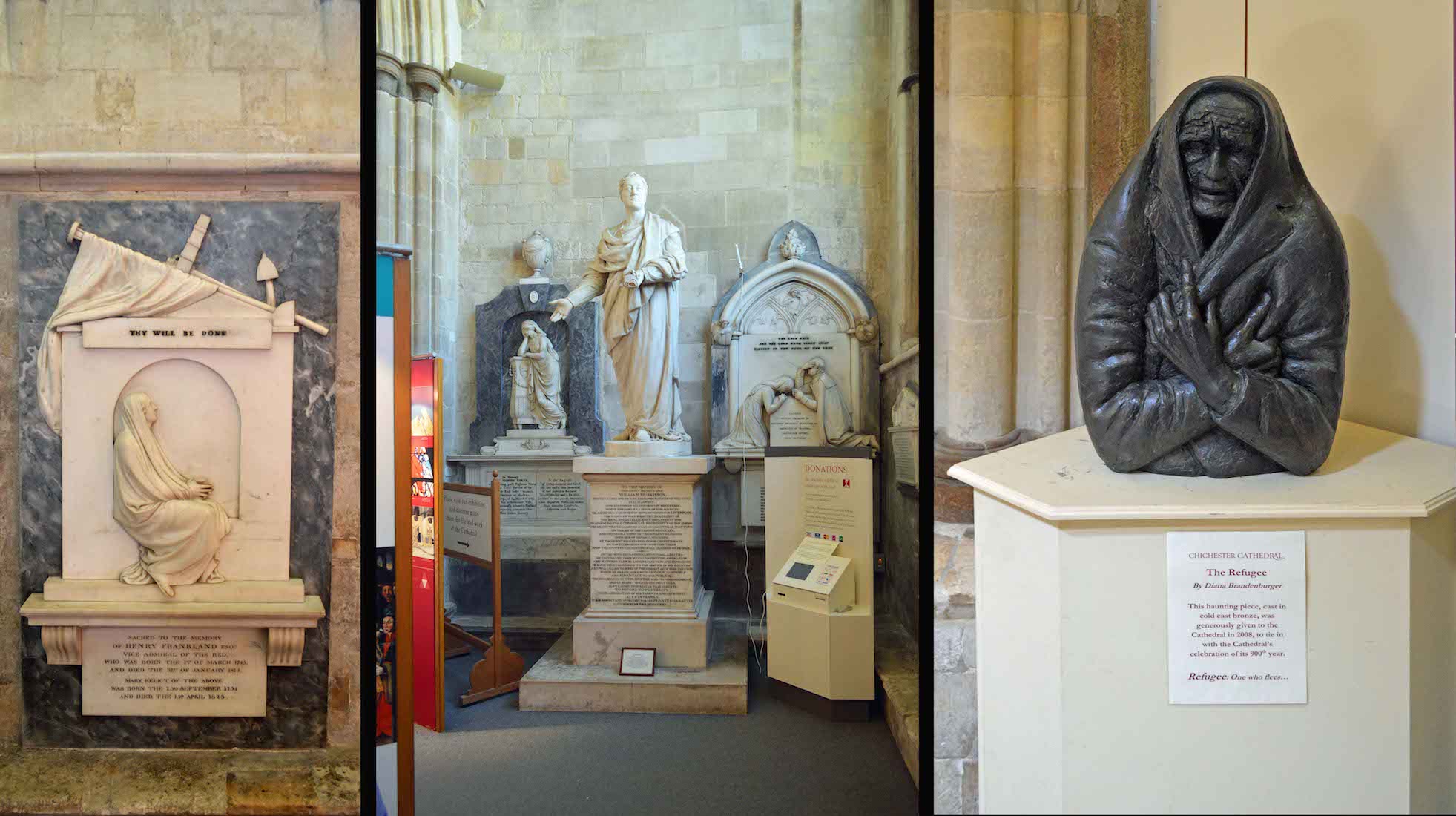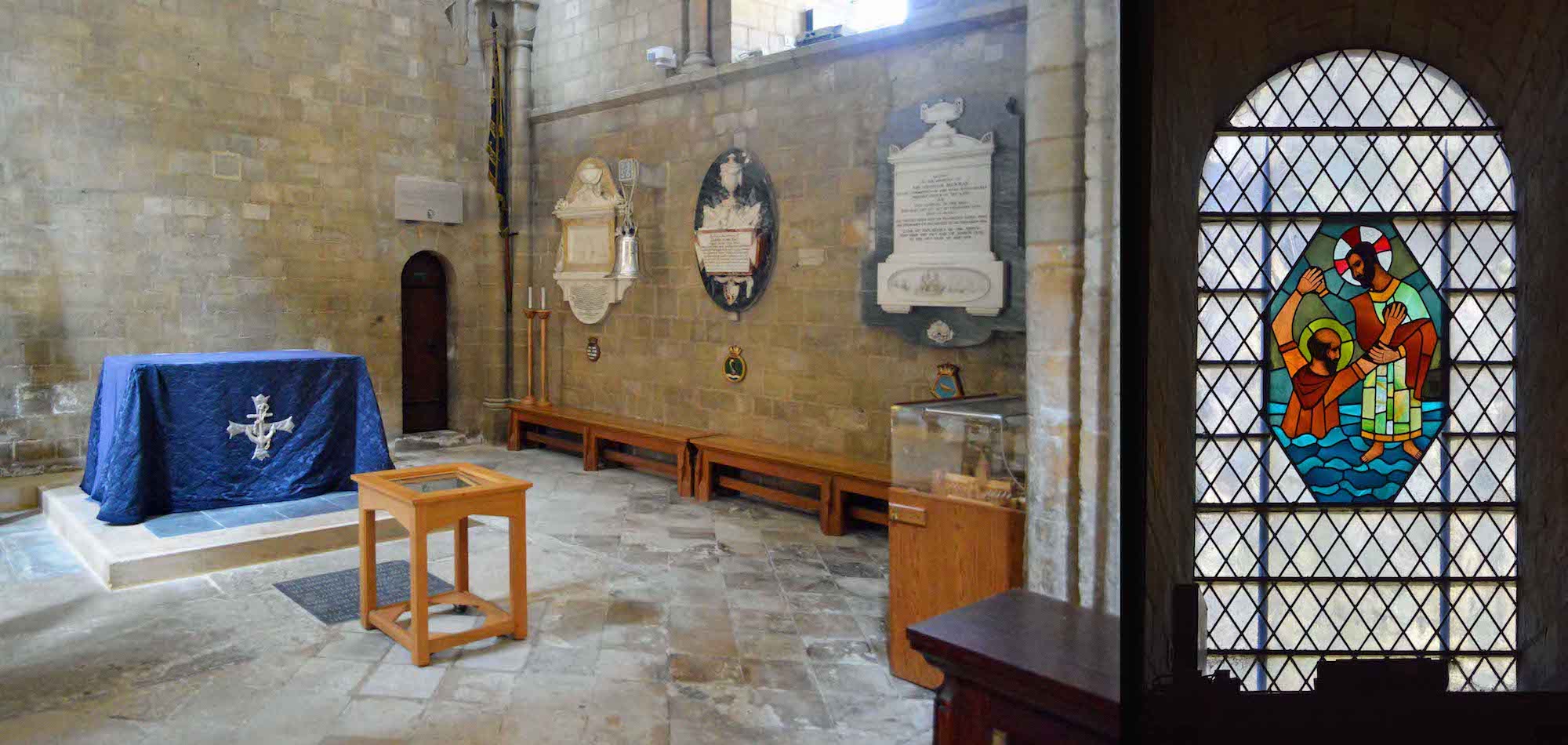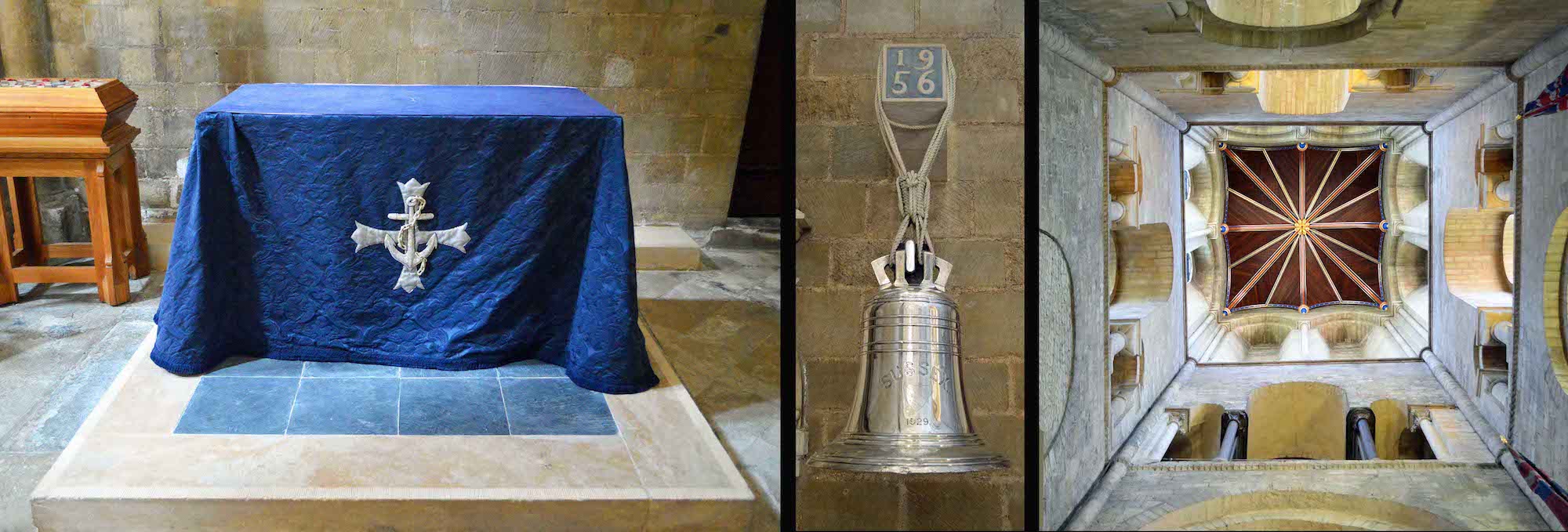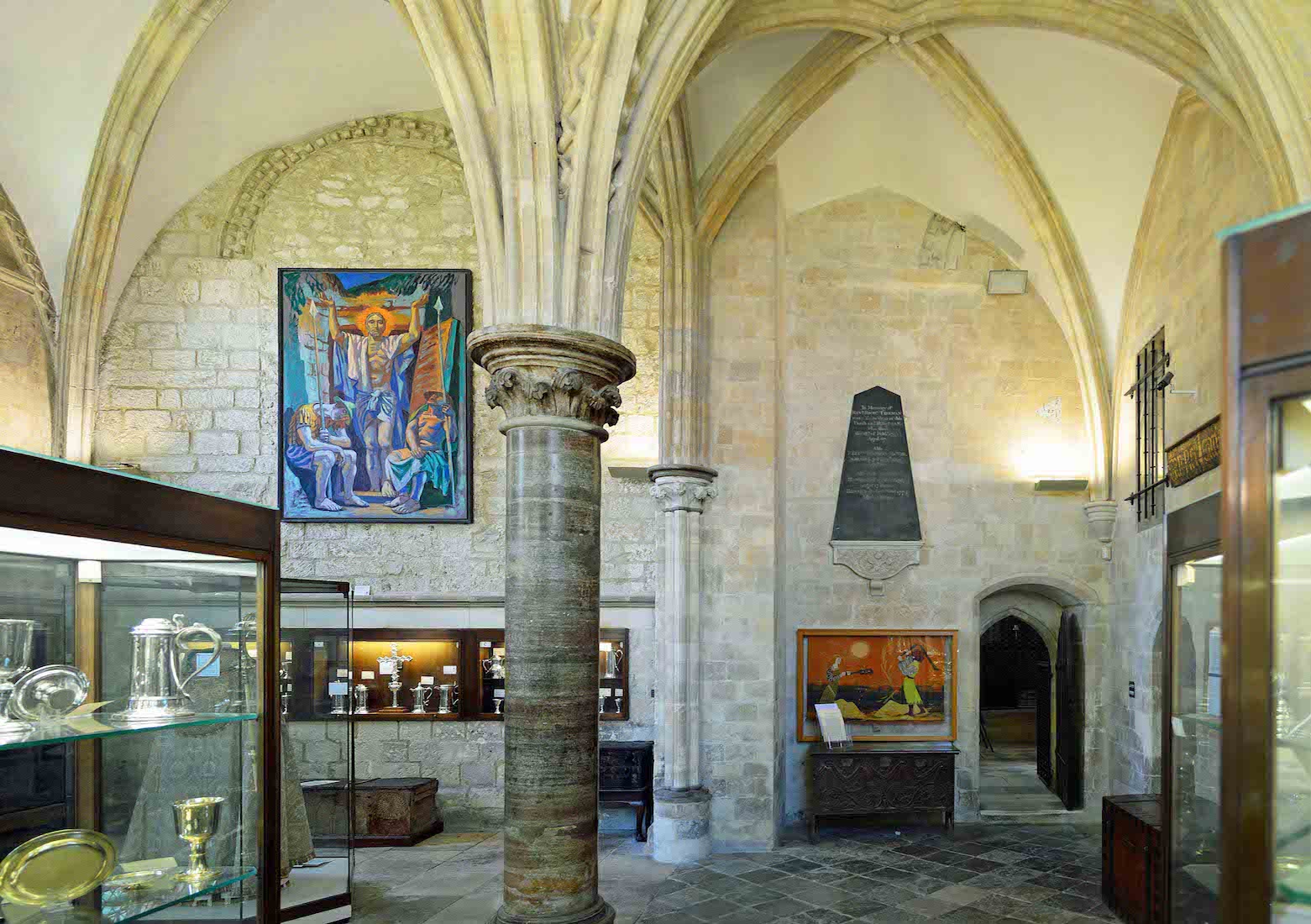61. CHAPEL OF ST JOHN THE BAPTIST
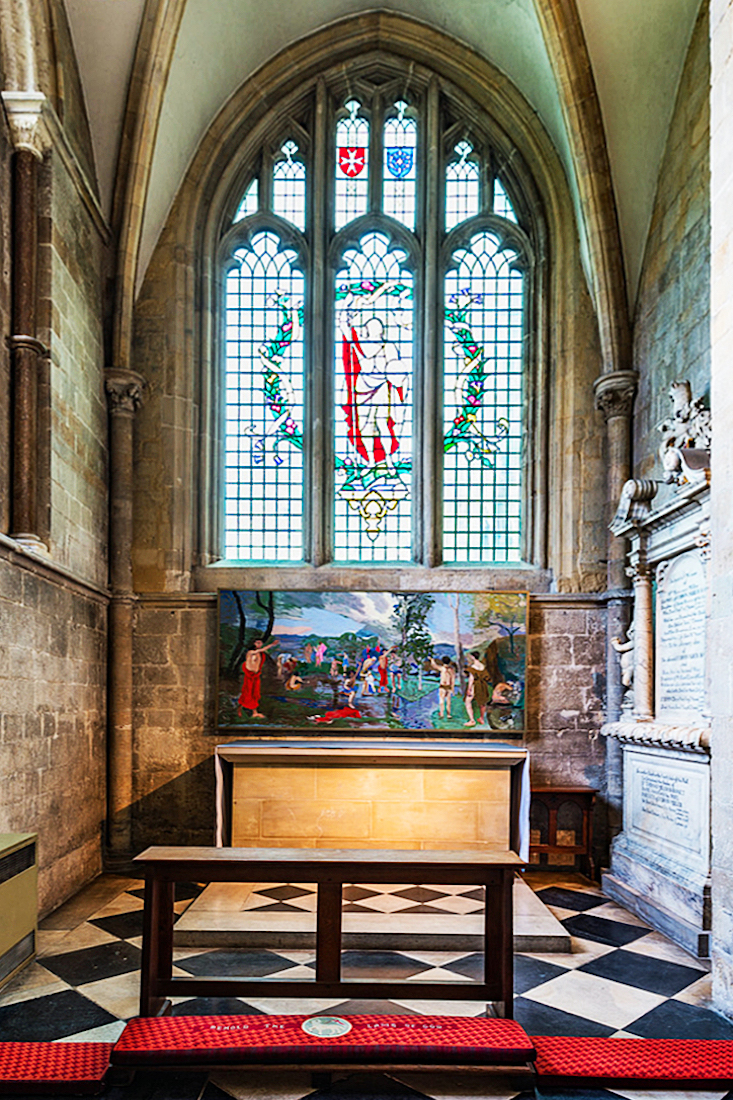
Leaving the Lady Chapel we move across to the small Northern Chapel of St John the Baptist. The painting by Patrick Procktor above the altar is of the baptism of Christ and was given to the Cathedral in 1984. St John is seen baptising Jesus while bystanders point towards the cross (the tree) which represents the crucifixion. To our right is the impressive 1701 memorial to Margaret Miller, wife of Sir John Miller and family. The chapel was renovated in 1924 in memory of Sir Hubert Miller’s son who was killed in World War I. The Chapel in fact has two windows ... . PLAN
62. CHAPEL WINDOWS
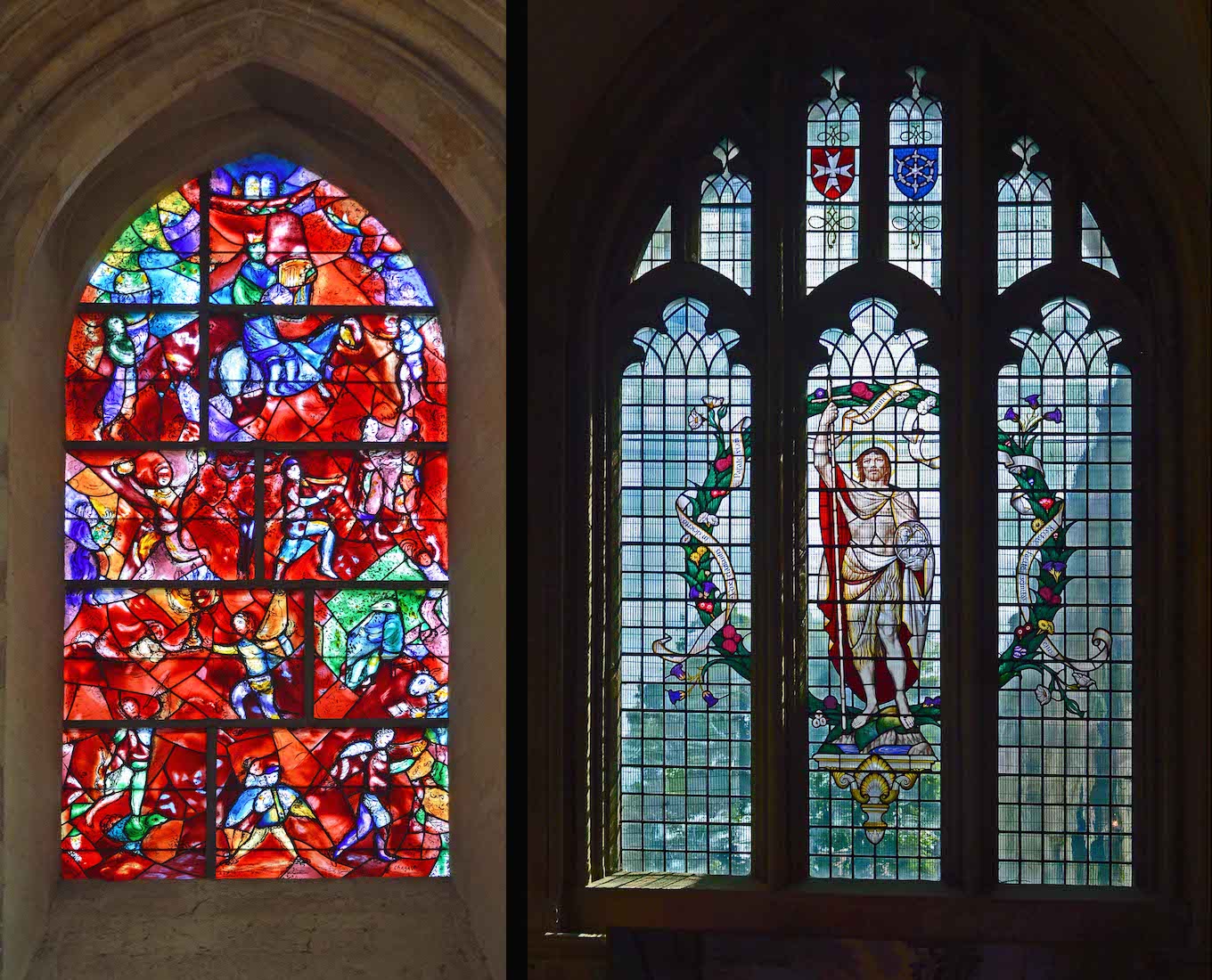
The East window (shown at right) by Christopher Webb (1952) depicts St John the Baptist. It replaces a window by W. Wailes (1843) which was blown out in World War II. The wreath shows flowers likely to be found growing wild in Sussex on 24th June, St John’s Day. A Maltese Cross, representing the Knights of St John, and a Catherine wheel can also be seen. Tucked away on the North side is the vivid red Marc Chargall window. This is a brilliant visual interpretation of the great song of praise which we know as Psalm 150.
63. NORTH QUIRE AISLE
Turning West we look straight down the North quire aisle. Again we notice the colourful ceiling bosses, as well as the altar frontal and memorial on the wall at right, the bulk of the organ extending in the distance, and access to the high altar a little way along to our left. The window at right remembers the Cathedral bishops from the 16th to 19th centuries.
64. ON THE NORTH WALL
The monument at left is in memory of John Cawley, a wealthy brewer, and thrice Mayor of Chichester who died in 1621. The inscription was later replaced to include his son William. At right is a high altar frontal, designed by the architect G F Bodley (1827 – 1907). It was completed in 1900. We next walk through the grill doorway to contemplate the high altar.
65. THE HIGH ALTAR TAPESTRY
The striking John Piper tapestry dates from the 1960s and forms the reredos to the High Altar. It covers and incorporates the sixteenth century oak reredos from the bishopric of Robert Sherburne (1508-1536), seen just above the tapestry. The tapestry is a complex web of doctrinal symbolism. You might look for the symbols of creation (earth, air, fire and water), as well as the symbols of the Four Evangelists (angel, lion, ox and eagle).
66. RICKINGALE MEMORIAL, CANDLE, ALTAR
The tomb chest at left is for John Rickingale D.D. also known as John de Rickingale (died 1429), a medieval Bishop of Chichester, Master of Gonville Hall, Cambridge, Chancellor of the University of Cambridge and Chancellor of York Minster. The paschal candle on its gold stand relates to the passover, and alludes to Jesus being the Light of the World. The high altar with its candlesticks is modern, and stands on a beautiful marble pavement.
67. NORTH TRANSEPT, HOLST MEMORIAL
We proceed to the North transept. There are several memorials along the West wall, and an interesting fenced off memorial to the composer Gustav Holst. Holst‘s closest friend, Bishop George Bell drew him to Sussex with his Whitsuntide Singers to make music in the Cathedral. On his death in 1934, Holst’s family asked if the composer’s ashes might be buried in the Cathedral. The memorial contains a simple inscription from Holst’s Hymn of Jesus: 'The heavenly spheres make music for us.' • The cherubs at right are very sad at the passing of Bishop Robert Grove.
68. NORTH TRANSEPT, NORTH WALL
Under the Great Window on the North side, there is a painting of the Bishops of Selsey and Chichester. Bishop Robert Sherburne from St Wilfred commissioned the painting in the 1530s and his face is shown in each of the paintings. They were painted by Sherburne’s court painter, Lambert Barnard and his two sons.
69. NORTH TRANSEPT, EAST WALL
Along the East wall of the North transept is a grill which gives access to the Cathedral treasury. Alongside is a monument to William Huskisson. William Huskisson PC (1770 – 1830) was a British statesman, financier, and Member of Parliament for several constituencies, including Liverpool. He is commonly known as the world's first widely reported railway passenger casualty as he was run over and fatally wounded by George Stephenson’s pioneering locomotive engine Rocket.
70. CATHEDRAL BANNER
We leave the transept and move to the North nave aisle. Here we find this Cathedral banner, given in 1901 by Canon Arthur Barwell, Prebendary of Fittleworth. It depicts St Richard and St Wilfrid in episcopal vestments in a highly decorated gothic setting.
71. DE VERE TOMB
From the aisle we can now look across the De Vere tomb to the Chapel of St Thomas and St Edmund. This elaborate tomb of Joan de Vere who died in 1293, dates from the late 13th century. It shows miniature mourners along the side,known as ‘weepers’.
72. CHAPEL OF SAINTS THOMAS AND EDMUND
We walk around the tomb to find ourselves in the Chapel of Saints Thomas and Edmund. The altar and reredos are finely decorated. This chapel was restored to use by the generosity of the Abbey family in memory of Noel Roland Abbey. The architect was H.S. Goodhart-Rendel. The chapel was then refurbished in 1978 as a memorial to Francis William Steer, Cathedral Librarian, Chichester Cathedral. The window depicts St Edmund of Pontigny and St Thomas Beckett.
73. ENTRY TO THE CHAPEL
The chapel is entered by walking past a reconstructed rock garden. The elaborate plaque to right of the entry gives details of the circumstances of the gift of the Abbey family. The son, Noel Roland Abbey, gave his life in France in 1918.
74. RESURRECTION GARDEN
Many churches have a ‘resurrection garden’ which recalls the open tomb and the Resurrection of Christ. An information sheet nearby explains the significance of this display.
75. NORTH NAVE WINDOWS
These three-light windows form a matching set, picturing important figures in the history of the Cathedral. From left we see: Nathaniel Woodard 1811 – 1891 (School Founder), John Mason Neale d 1866 (Writer of hymns), George Chandler (Dean of Chichester 1830 – 1859); Charles Marriott 1811 – 1852 (First Principal of Chichester Theological College), Oliver Whitby d 1709 (School founder), John Lake (Bishop of Chichester 1685–1689); Bruno Ryves (Chaplain to Charles I, Dean 1660), Thomas Weelkes (Organist 1602–1623), Richard Montague (Bishop 1628–1638); Reginald Pecock (Bishop of Chichester 1450 –1459), Ralph Luffa (Founder of the Cathedral), S Wilfred (Bishop of Selsey 681 – 709).
76. ARUNDEL TOMB, BALL MEMORIAL
We come to the famous Arundel tomb with Richard Fitzalan, 3rd Earl of Arundel (ca 1307 – 1376) and his second wife Eleanor buried together. Much has been made of the figures having joined hands! The monument on the wall behind is to Rev Thomas Ball, Archdeacon and Dean of this Cathedral who died in 1770, and his wife Margaret.
77. MONUMENTS
A little further West we come to this collection of monuments and sculptures. There is a memorial to Vice Admiral Henry Frankland (1745 –1814) and his wife Mary, and another to the Right Honourable William Huskisson who represented the city of Chichester in Parliament for ten years. At right is a sculpture called ‘The Refugee’ by Diana Brandenburger. It is made of cold cast bronze and was given to the Cathedral in 2008, the Cathedral’s 900th year.
78. ST MICHAEL’S CHAPEL
St Michael’s Chapel is at the base of the Northwest Tower. It has a simple altar, and three memorials on the North wall. One of these is for Sir George Murray 1759 – 1819, who became Mayor of Chichester in 1815 following his father, two brothers and an uncle after he had retired from the Navy. While a Captain in the Navy, he served under Lord Nelson and distinguished himself at The Battle of Copenhagen in 1801, which is illustrated on the memorial. The window shows Christ lifting St Peter from the sea.
79. ALTAR, BELL AND TOWER
The simple altar has a blue cloth with a white anchor cross. The silver bell on the West wall is from the last HMS Sussex, and was given to the ship by the people of Sussex. The bell was then given to the Cathedral for safe-keeping after HMS Sussex was broken up. There have been four ships named Sussex in the Royal Navy, the first being in 1652. The upper part of the North tower suffered from storm damage in 1636 and was not rebuilt until 1901 by J. L. Paterson, who was also the architect of Truro Cathedral. It is a near copy of the South tower. The ceiling was colourfully decorated in 2000 using much gold leaf.
80. TREASURY
We finish our Cathedral tour with a quick visit to the Cathedral Treasury. This has been housed since 1976 in the Chapel of the Four Virgins, generally thought to be Saints Catherine, Agatha, Margaret and Winifred. The large vaulted chapel, which probably dates from the end of the 12th century, contains traces of medieval wall paintings in ochre, green, blue and red. It is accessed from the North quire aisle, or through gates from the North transept.


